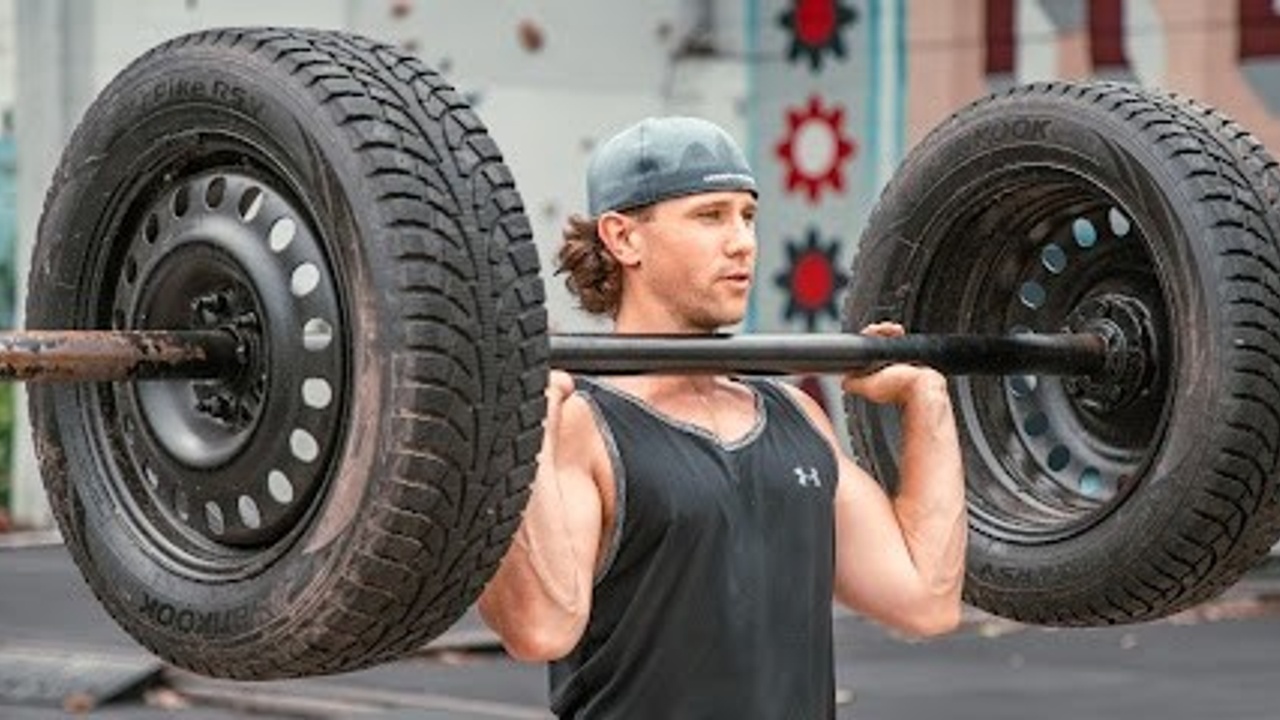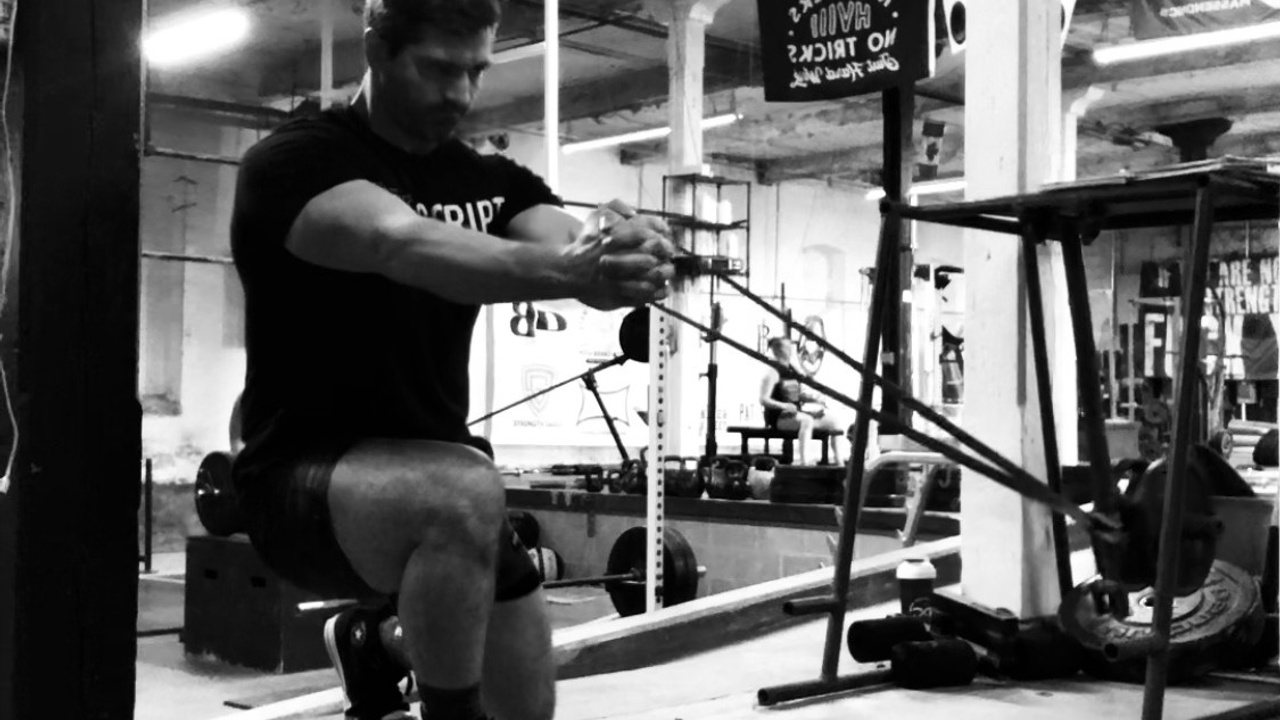RX'D Radio Podcast
The Pre-Script™ team along with special guests bring you a unique blend of science, strength, and clinical experience on the RX'D Radio Podcast. View the latest episodes below.
Spotify Apple Podcasts YouTube
THE HIERARCHY OF GROWTH

By Jacob Larsen
Beginning with wrestling and soccer, Jake has been immersed in fitness nearly his whole life. Personal training and studying exercise in college were the natural progression of that passion. Competing locally in bodybuilding and powerlifting, Jake currently studies exercise at university and does online coaching at Jackalstrength.com.
THE HIERARCHY OF GROWTH
Looking to get stronger? Bust through a plateau? Lose weight or gain muscle mass?
Growth is rarely a linear progression. Most often we experience a burst of progress followed by a period of stagnation, we seem to be just getting by until the next burst comes along. This natural process may seem strangely out of our control. Sometimes it works, sometimes it doesn’t, it seems to come down to luck.
The reality is that there’s no luck to it. Just like with every high-performance system, success is limited by our ability to find and improve the “weakest links”. Understanding how to trigger growth is a matt...
"STRETCHED POSITION" VERSUS "LENGTHENED MUSCLE"

By Abdurahmaan Saloojee
Abdurahmaan is a Pre-Script coach from Ottawa who loves reading, traveling, and training.
"STRETCHED POSITION" VERSUS "LENGTHENED MUSCLE"
Too often in fitness and specifically exercise selection, the terms “stretched” and “lengthened” are used interchangeably. This is a mistake, in my opinion. Words matter, and how you define them even more so. Let’s differentiate between them:
“Stretched” is used to refer to a position in an exercise, when the eccentric is completed and the concentric contraction is about to be initiated. This is completely separate from the anatomical length of a muscle. Let’s look at two different examples to illustrate this. In a preacher curl, at the bottom of the rep when the elbow is almost locked, this is termed the stretched position of the exercise. It is not lengthened in an absolute sense, but it is experiencing the maximal stretch possible within the constraints of that exercise being done correctly. Another example is a sea...
SELF EFFICACY

By Kyle Coogs
Kyle is a strength & conditioning coach residing in Massachusetts. He's spent the past few years working primarily alongside hockey athletes, among others. More recently he had the opportunity to assist with pre-season testing for an NHL organization. He also has some skin in the strength game, having competed in powerlifting for the past 6 years.
Self Efficacy
In October of 2017 while working as a strength and conditioning intern, I had the opportunity to listen to Bob Tewksbury speak to upcoming athletes. Tewksbury is a retired professional pitcher who began working as a Mental Skills Coach within Major League Baseball following his athletic career. I expected most of his discussion points to focus on visualization, positive self-talk, and other common focal points in the sports psychology field. Instead, he recalled conversations with professional athletes and touched on a particular situation that reverberated itself in my mind due to its far reaching application....
CUEING - A DIMINISHING ART

By Jeff Anderson
Jeff Anderson is a Strength and conditioning coach currently based out of Vancouver, BC, Canada. Having been a personal trainer for 7+ years and working with a huge breadth of gen. pop., rehab, youth and professional athletes. Currently, Jeff is interning at Simon Fraser University as a S&C coach and working as a trainer online, and in person with general clients and competitive powerlifters.
Cueing - A Diminishing Art
Giving a cue to a client or athlete can be a huge performance enhancer to seeing results in their training. What is unfortunate is the presence of the lost art and diminishing skill, or lack thereof, for trainers and coaches to cue their clients correctly and effectively.
In the beginning as a trainer/coach, when learning how to teach people to exercise, we usually fall back onto our own experiences, teachers and mentors who help us along the way of teaching variations of exercises and execution. What is not discussed however is why. Why is it that we...
PRIOTIZIING STABILITY BY JAMES THAYER

James is an Assistant Director of Fitness and Wellness, educator, presenter and Pre-Script Coach. He believes the best approach to learning is to engage, educate and empower individuals and communities. James utilizes coaching, programming, performance and movement proficiency to set a standard for conversation to application.
Prioritizing Stability
Stability is the linchpin between mobility and strength for force transference. An inability to resist forces acting on the body creates force leakage (compensation patterns) instead of a direct path of force into the movement. When stability is the limiting factor to exercise execution or duration, utilizing the two tenants of stability creates a seamless transition of regression for the long-term goal of sustainable progression.
The two tenants of stability are:
1. Deviate the Center of Mass (CM)
2. Reduce/Expand the Base of Support
These concepts create a roadmap on how to best utilize stability in relation to exerci...
KNEE PAIN WHEN SQUATTING BY ABDURAHMAAN SALOOJEE

Abdurahmaan is a Pre-Script coach from Ottawa who loves reading, traveling, and training.
Knee Pain When Squatting
This may be the first of a series, because there are a plethora of reasons that your knee may hurt in a squat. In fact, this is a good teaching point right off the bat: many coaches that are reading this have likely received a message saying “Hey coach, when I squat my knee hurts. What should I do?” You may have even been the one asking that question (guilty). The truth is, many coaches are tired of answering this question (at least the way it is currently worded) due to its lack of context. There are a multitude of factors that may contribute to knee pain during a squat, including but not limited to: Q-angle (as a consequence, gender), limb length, training age, injury history, and specific squat variation. All of this is to say, if you know you ask this question, try to provide a bit of context for the coach so that they can get more specific. And if you are a coach th...
DEADLIFTS AND BICEP TEARS BY JAKE LARSEN

Beginning with wrestling and soccer, Jake has been immersed in fitness nearly his whole life. Personal training and studying exercise in college were the natural progression of that passion. Competing locally in bodybuilding and powerlifting, Jake currently studies exercise at university and does online coaching at Jackalstrength.com.
Deadlifts and Bicep Tears
The deadlift: king of lifts, right? Do it right and the benefits are numerous, do it wrong… well, it is infamous.
Regarding conventional deadlifts, you’ve probably heard that alternating grip (sometimes called the over-under grip) is “bad”.
First off, what does bad mean? “Bad” is an ambiguous term that people use to describe things that they don’t understand. Does that mean it will negatively impact your goals? Will it be effective at creating the desired stimulus? Will it increase risk of injury? Create muscle imbalances? Let’s break down what’s actually going on so we can analyze the pros and cons of...
WHAT'S MEASURED IS MANAGED - ASKING BETTER QUESTIONS

By James Macintosh
James is an ex powerlifter, online coach, educator and Pre-Script coach. He believes that education is not just theory but, more importantly, applying what we are taught. James takes a detailed approach to the art of coaching by facilitating conversations to improve communication, programming and training protocols for coaches to develop their services.
What’s measured is managed, but more importantly, Asking better questions of what we are measuring.
We all know that there’s so much more to coaching than giving someone a spreadsheet.
As a coach in this day and age, we get told we have to consider biofeedback markers and performance metrics when assessing clients’ progress within their micro/macrocycles. This “full system” approach to evaluating and understanding the body can be vitally important in our decision making when writing programs to align with your client’s goals. BUT if we aren’t able to ask better questions about these biofeedback markers, wh...
HAMSTRING CONSIDERATIONS

By Kyle Coogs
Kyle is a strength & conditioning coach residing in Massachusetts. He's spent the past few years working primarily alongside hockey athletes, among others. More recently he had the opportunity to assist with pre-season testing for an NHL organization. He also has some skin in the strength game, having competed in powerlifting for the past 6 years.
Hamstring Considerations
One of the more undervalued and under-trained muscle groups, the hamstrings, can be a complex addition in the programs of most athletes and lifters. In the athletic population, implementation in their programs revolve around Nordic hamstring curls and various stretches. Whereas the hardened lifter resorts to deadlift variations and avoids providing the muscle any relief. Before choosing a training method, it’s important to familiarize yourself with the structure around the muscle group. The hamstrings (which consist of three muscles) originate at the bottom of the pelvis and insert below the knee join...
Introducing the Landmine Into Your Program

By James Thayer
James is an Assistant Director of Fitness and Wellness, educator, presenter and Pre-Script Coach. He believes the best approach to learning is to engage, educate and empower individuals and communities. James utilizes coaching, programming, performance and movement proficiency to set a standard for conversation to application.
INTRODUCING THE LANDMINE
Implementing a new training tool or piece of equipment into a training block can carry with it excitement at the prospect of change and new challenge. Ideally that excitement would be accompanied by consideration towards that implementation or it can quickly fall into nuance on the new, losing sight of the goal. The landmine attachment is one of those tools that is becoming a staple in most gyms and appearing more frequently in training programs.
The landmine is unique in that it allows the user to self-organize around an externally stabilized pivot point through both unilateral and bilateral loads. The anchored po...
Recent Posts
